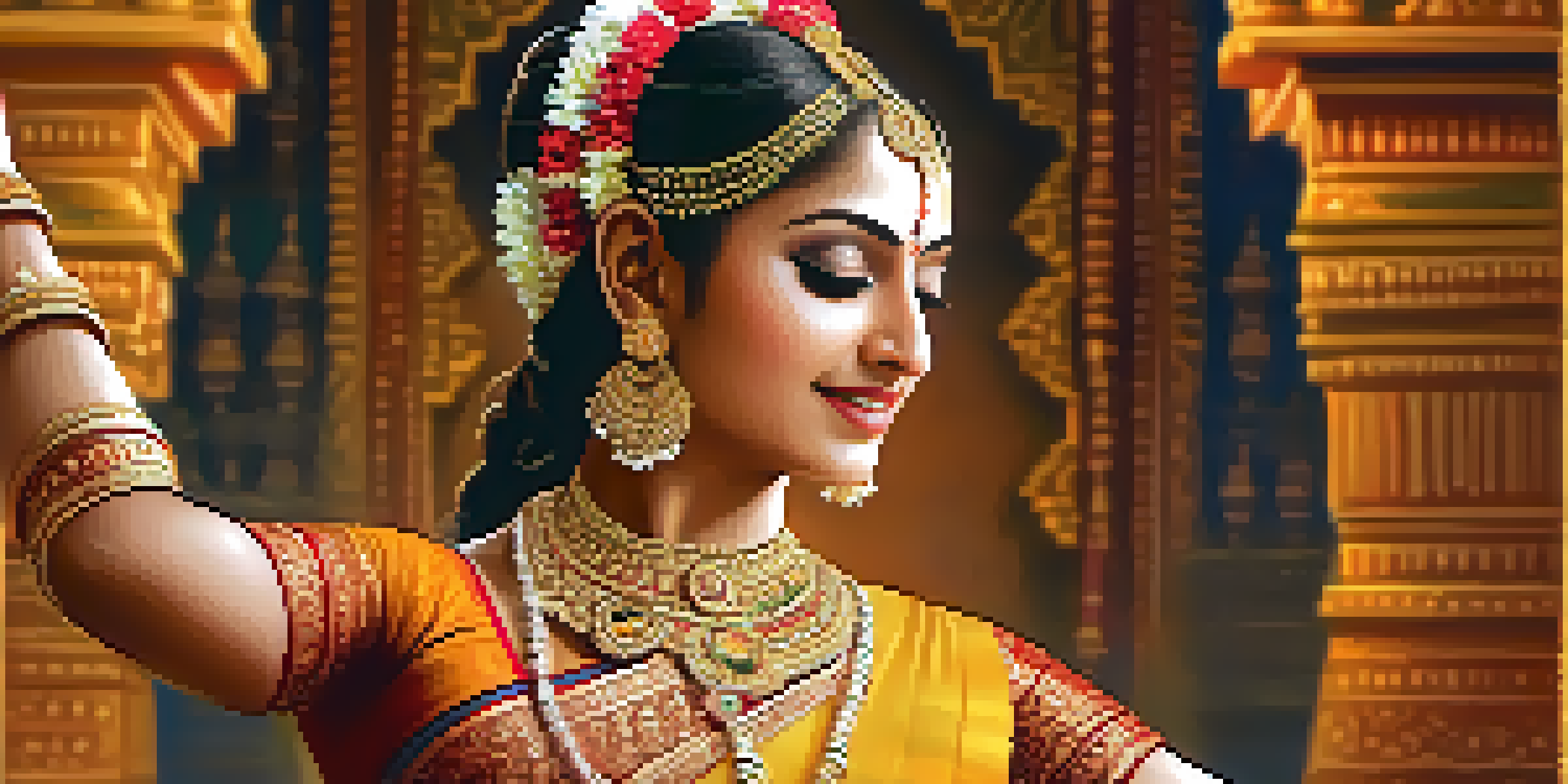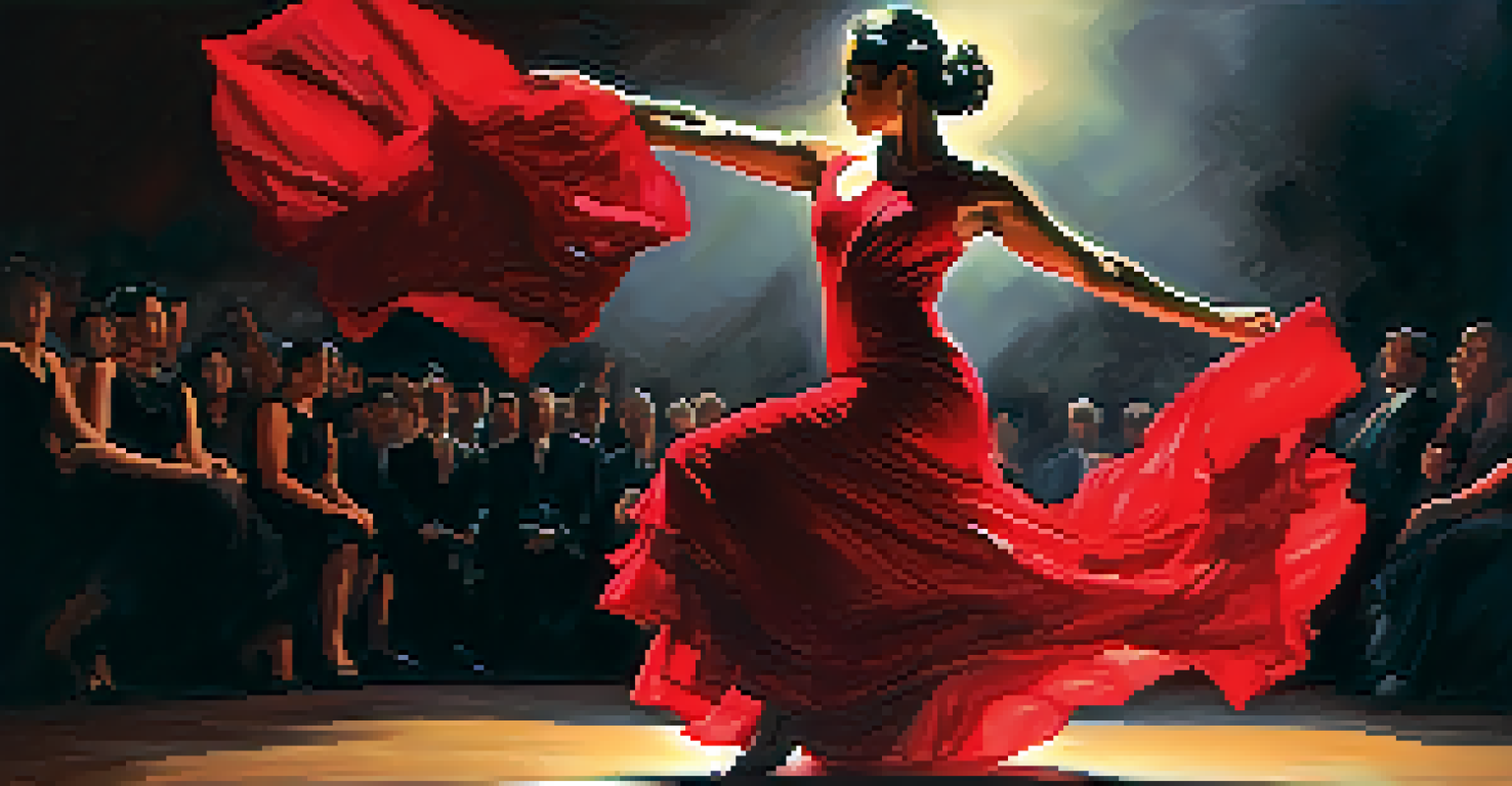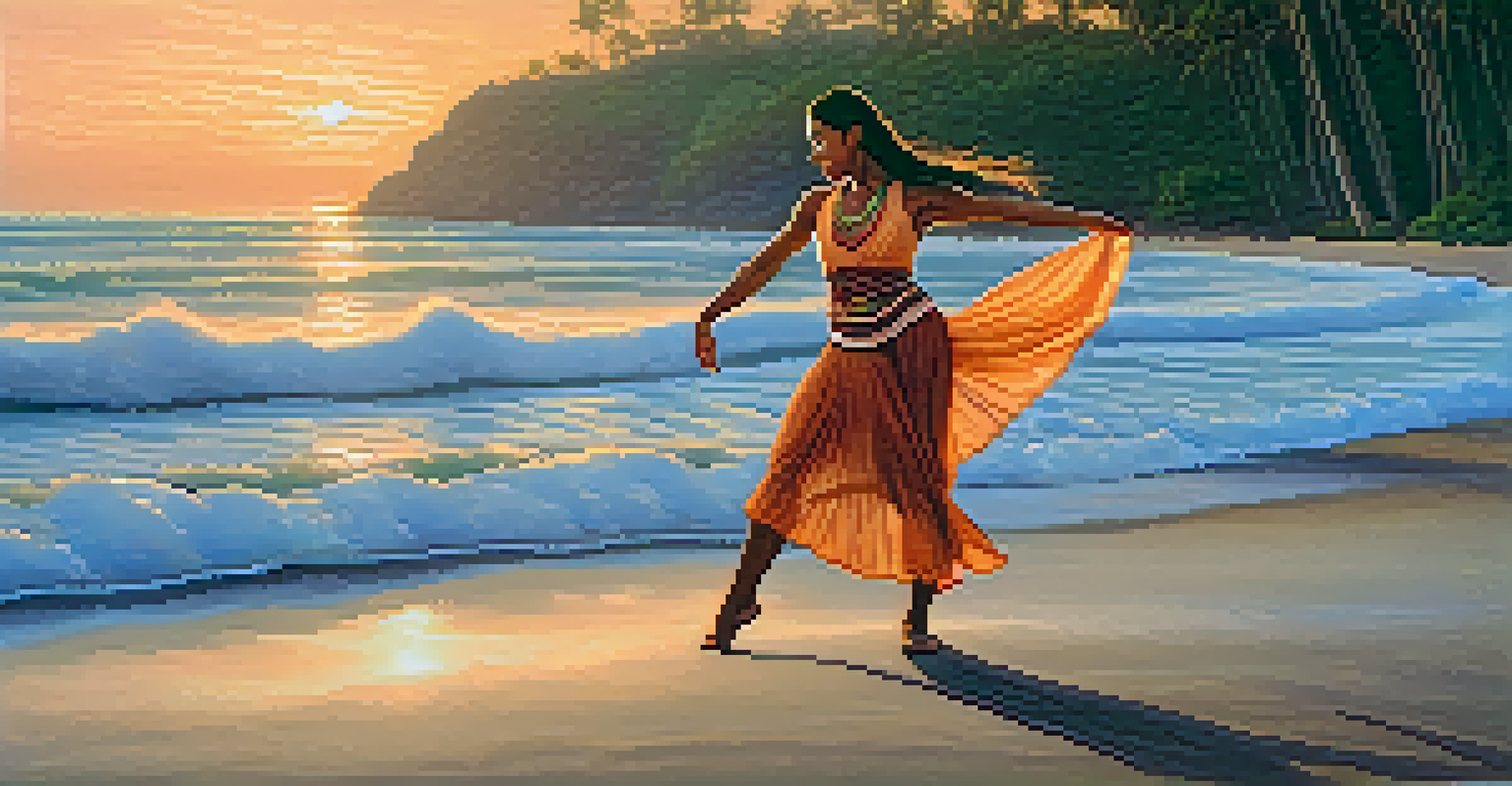Cultural Dance Forms: Emotional Expression Across Different Cultures

The Universal Language of Dance: An Introduction
Dance is often described as a universal language, transcending barriers of speech and nationality. Every culture has its unique dance forms that convey stories, emotions, and traditions. From the intricate movements of ballet to the vibrant steps of samba, each style reflects the values and history of its culture. Through dance, individuals express joy, sorrow, love, and even resistance, creating a profound connection between performers and audiences.
Dance is the hidden language of the soul.
Consider a moment at a wedding, where the bride and groom take center stage for their first dance. This act, steeped in emotion, not only celebrates their union but also resonates with the audience, evoking shared feelings of love and hope. Such moments illustrate how dance can serve as a powerful medium for emotional expression, creating a collective experience among participants.
As we explore various cultural dance forms, we’ll uncover the rich tapestry of emotions they embody. Each dance tells a story, offering a window into the heart of a culture and the human experience that unites us all.
Bharatanatyam: The Dance of Emotions in India
Originating from the temples of South India, Bharatanatyam is a classical dance form that beautifully combines expression, music, and rhythm. The intricate hand gestures (mudras) and facial expressions (abhinaya) convey a wide range of emotions, from love to devotion. Dancers often depict stories from Hindu mythology, bringing characters to life through their movements and expressions, thus creating a rich narrative experience.

Imagine a dancer gracefully transitioning from a serene expression to one filled with sorrow, embodying the emotional depth of the story being told. This ability to express complex emotions through physical movement makes Bharatanatyam not only a performance but a profound emotional journey for both the dancer and the audience.
Dance as a Universal Language
Dance transcends cultural barriers, allowing individuals to express emotions and share stories that resonate across diverse communities.
Bharatanatyam exemplifies how dance can serve as a form of emotional storytelling, allowing performers to connect deeply with their cultural roots while also sharing their narratives with a global audience.
Flamenco: Passion and Emotion from Spain
Flamenco, a vibrant dance form from the Andalusian region of Spain, is characterized by its passionate movements and expressive clapping. This dance is deeply intertwined with the emotions of the performers, often conveying themes of love, loss, and longing. The intense footwork, dramatic poses, and the soulful strumming of the guitar create an atmosphere charged with emotion, drawing audiences into the experience.
Dancing is like dreaming with your feet!
Picture a flamenco dancer on stage, her shawl swirling as she channels deep emotion into every movement. Each stomp of her foot resonates with the heartbeat of the music, while her expressive arms tell a story of heartache and resilience. This powerful connection between dance and emotion is what makes flamenco a compelling form of cultural expression.
Through its passionate performances, flamenco showcases how dance can serve as an emotional outlet, allowing artists to share their inner feelings while captivating audiences with their artistry.
Hula: The Heartfelt Dance of Hawaii
Hula is more than just a dance; it's a way of preserving the history and culture of the Hawaiian people. This expressive dance form uses gestures and movements to narrate stories about nature, mythology, and daily life, reflecting the deep connection between the Hawaiian culture and the environment. Each performance is imbued with emotion, allowing dancers to express love, respect, and gratitude for their ancestors and land.
Imagine the gentle sway of a dancer’s hips as she tells the story of the ocean, her hands mimicking the waves. The rhythm of the music and the beauty of the movements create a serene atmosphere, evoking feelings of peace and harmony. Hula not only entertains but also educates, inviting viewers to connect emotionally with the stories being shared.
Emotional Storytelling in Dance
Various dance forms, such as Bharatanatyam and Flamenco, use intricate movements and expressions to convey deep emotions and cultural narratives.
Through the lens of hula, we can see how dance serves as a powerful medium for emotional expression and cultural storytelling, celebrating the richness of Hawaiian heritage.
Samba: Joy and Celebration in Brazil
Samba is synonymous with celebration and joy, often associated with Brazil's famous Carnival. This lively dance form combines rhythmic movements with vibrant music, creating an infectious energy that invites everyone to join in. Its roots trace back to Afro-Brazilian culture, where it emerged as a form of expression that celebrates life, community, and resilience.
Imagine the streets of Rio de Janeiro filled with dancers in colorful costumes, moving together in perfect harmony. The pulsating beats of samba music resonate through the crowd, lifting spirits and creating a sense of unity among participants. This collective experience showcases how samba transcends individual expression, allowing people to celebrate shared emotions of joy and togetherness.
Samba exemplifies how cultural dance forms can serve as an outlet for emotional expression, turning celebrations into a powerful expression of community and heritage.
Kathak: The Storytelling Dance of India
Kathak is a classical dance form from North India that emphasizes storytelling through intricate footwork and expressive gestures. This dance style often narrates tales from Indian epics, incorporating elements of drama, humor, and devotion. Dancers convey emotions through facial expressions and the rhythm of their movements, creating a captivating performance that resonates with audiences.
Visualize a Kathak dancer spinning gracefully, her movements telling a story of love or valor. Each step and gesture is carefully crafted to evoke specific emotions, allowing the audience to feel the narrative unfolding. This connection between the dancer and the audience is what makes Kathak a powerful medium for emotional expression.
Cultural Connection Through Dance
Cultural dance serves as a powerful medium for fostering community and understanding, reflecting the shared humanity found in emotional expression.
Through Kathak, we see how dance can serve as a bridge between tradition and emotion, enabling performers to share their cultural narratives while captivating the hearts of those who watch.
Ballet: A Blend of Technique and Emotion
Ballet, often regarded as the epitome of grace and technique, is a dance form that conveys a wide range of emotions through its structured movements. From the elegance of a pirouette to the power of a grand jeté, ballet dancers express everything from joy to despair, often telling stories through their performances. The combination of music, choreography, and emotion creates a captivating experience for audiences.
Picture a ballerina on stage, her face a canvas of emotions as she dances the role of a heartbroken lover. Every movement, every expression is meticulously crafted to convey the story's emotional depth. This ability to evoke feelings through dance makes ballet a timeless art form that resonates with audiences across generations.

Ballet illustrates how dance can be both a technical discipline and a profound emotional experience, allowing performers to connect with audiences on a deeply emotional level.
The Power of Dance: Connecting Cultures Through Emotion
Across the globe, cultural dance forms serve as powerful tools for emotional expression and connection. They allow individuals to share their stories, traditions, and feelings, creating a bond that transcends language and cultural barriers. As we’ve explored various styles, it becomes clear that dance can serve as a mirror, reflecting the emotions and values of a culture.
Consider how a simple dance can bring people together, whether it’s at a celebration, a festival, or a performance. The shared experience of witnessing and participating in dance fosters a sense of community and understanding, bridging the gap between diverse cultures. This connection highlights the universal nature of human emotions and the role of dance in expressing them.
Ultimately, cultural dance forms remind us of our shared humanity, offering a beautiful way to celebrate our differences while uniting us through emotion and artistic expression.